Essential accessories: Basic Lenses
OTHER PARTS OF THE SERIES SO FAR:
Essential kit for your Canon T2i/550D if you’re on a budget:
Part 2: Batteries, Memory Cards & Bags
Part 3: Depth of Field, Aperture & ND filters
After posting my early review of the new Canon EOS T2i / 550D and the test short “FEBRUARY“ and the overwhelming response (50.000 views of the clip so far on Vimeo and YouTube combined!) I keep getting asked for tips on all sorts of accessories for the camera: which lenses to use, which memory cards, which tripod …
To give all of you a central starting point on your quest to make your brand-new T2i / 550D a very usable movie machine, I put together this list of accessories aimed at an audience that is very price-conscious – that’s why you ordered that T2i / 550D after all, isn’t it!
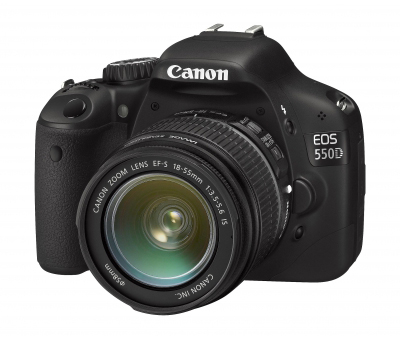
Canon EOS 550D as it’s called in Europe and Asia …
As I said before, I’m relatively new to DSLR filming myself, but I have been a full-time cameraman and part-time photographer for years now, and I know what is needed for one and the other.
And that’s the problem with these new crop of “HDSLRs”: They are essentially still photo cameras which “happen to have” a gorgeously-looking video image if used right. But the problem is that everything else about these cameras is totally different from what a professional is used to on a proper camcorder like e.g. the EX3. So you have to “pimp it up” with quite a bit of gear in order to transform it into a really usable video workhorse.
If you’re completely new to DSLRs or filming in general, you should definitely invest in:
- lenses,
- batteries,
- memory cards,
- sound recording gear,
- a tripod / monopod,
- a magnification tool to enable you to really judge the focus on the screen,
- a variable ND filter and
- a handheld shoulder rig.
To me, this is the chronological order in which I recommend getting these accessories, with the most important ones at the top. They are really all important, but you don’t need to buy them all at once. If you are serious about your filmmaking with DSLRs, you will quickly realize what else you need, and I bet most of it is on that list.
I will go through this list in the coming days and weeks, and recommend specific products in each and every field.
I have filmed with DSLRs only a bit before, but I know much of the kit from photography and people I work with (and sometimes employ as cameramen when I direct/produce). Furthermore, for many valuable tips on these lists I have to thank a range of fellow filmmakers who I know mainly from Twitter, most notably Mario Feil, Micha Schmidt and Sebastian Wiegärtner.
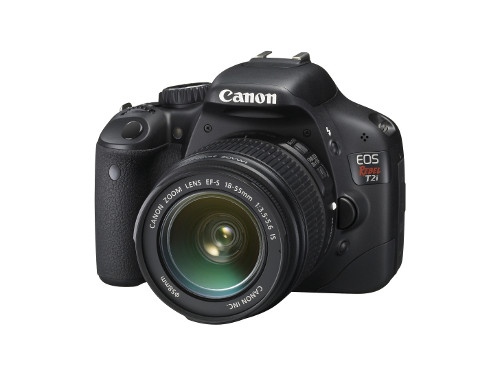
… or Canon Rebel T2i, its US name.
• PART 1: LENS BASICS & BASIC LENSES:
First of all: This is most certainly the part of your kit that is going to stay with you the longest time. You will be able to use 35mm lenses on future cameras possibly for a very, very long time – that is, of course, if you treat them well. Therefore, buy good lenses! They are an investment and will enable you to shoot in ways you aren’t able to with cheap ones.
Apart from crisp sharpness or little distortion, the main key feature of a good lens is speed. Speed equals wide apertures – the wider the maximum aperture of a lens is, the better. Good, fast lenses typically show maximum f-stop values like f/2.8, f/1.8, f/1.4 or even f/1.2.
Why is a wide aperture = fast lens so important? The more light gets through a lens, the darker the environment you shoot in can be. One of the great strengths of shooting with DSLRs is that they have a large sensor, which also means the are very light sensitive, but only if used with a fast lens! That’s why it simply makes no sense in buying the slow stock lens if you don’t absolutely have to. Better save a bit longer for the real deal and go out and buy it then!
Aperture is also key in achieving that shallow depth of field look that we’re all striving for. The wider the aperture, the shallower the depth of field will be. To utilize a wide aperture even in bright sunlight without overexposing, you need a Neutral Density (ND) filter – which I will cover on a later post.
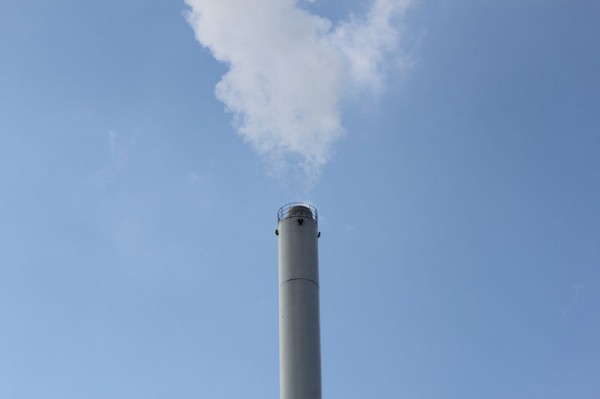
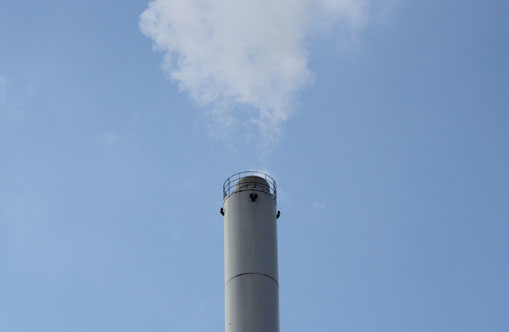
50mm (APS-C; 80mm equivalent on Canon EOS Rebel T2i/550D or 7D)
When shopping for lenses, don’t forget that the advertised focal lengths on all 35mm lenses relate to full frame cameras like the 5Dmk2. The 7D and the 550D employ a smaller sensor (APS-C standard), which leads to a magnification factor of 1.6. This effectively means, for instance, that a 50mm lens (considered a “standard” lens) effectively becomes a 80mm lens. As a consequence, you can end up paying a lot more to get the same wide angle for a 7D or 550D. But it also means that long lenses become even longer, which is often great for sports or shooting from afar in general.
This is one point that speaks against the kit lens: it is a EF-S lens, which means it is designed specifically for cameras with APS-C-sized sensors. If you ever want to move to a full-frame camera, you will not be able to use it with this lens! (Using it on a full-frame camera would cause heavy vignetting around all the edges.) I know there are affordable EF-S lenses out there, but for the sake of your professional future, I won’t cover to many of them. You’re better off buying the camera without the kit lens – invest $200-300 more and get something proper that will stay with you!
If you consider buying a zoom lens, be sure to get lenses that have the same aperture all the way through. Zoom lenses are typically not as fast as many primes, and fast zooms are far more expensive – but then again, you are much more flexible with them and you don’t have to buy several primes to cover the same range of focal lengths.
Here’s the list of very good basic lenses with my suggestions:
Wide Angle:
– Tokina 11-16MM F/2.8 ATX 116 (APS-C size)
A wide angle with a moderate zoom, exceptional for the price and very fast. Effectively is a 18-26mm on the T2i / 550D, which is still very wide.
Standard lenses:
– Sigma 30mm f/1.4 EX DC HSM
Is affordable as a basic prime lens, equals a field of view of 48mm on the T2i / 550D – Be aware that this is an APS-C lens which cannot be used on a full frame body like the 5D Mark II. (The Canon EF 50mm would be its closest match on a full frame body.)
– Canon EF 50mm f/1.8 II
A very cheap but really fast lens considering the low price tag. Becomes a 80mm on the T2i / 550D, which is effectively a moderate telephoto lens then.
– Canon EF 50mm f1.4 USM
Faster, sharper and more robust than the 1.8 II. Bit more pricey but still great bang for the buck. Becomes a 80mm on the T2i / 550D as well.
Standard Zooms:
– Tamron AF 17-50mm F/2.8 SP XR Di II VC (Vibration Compensation) (APS-C size!)
Was told by several people that this is a great alternative to the Canon below, but haven’t tried it myself. It’s really fast, seems to be very sharp according to reviews, and even offers stabilization (called “Vibration Compensation” or VC by Tamron). An even cheaper non-stabilized version is also available, although I really recommend getting stabilized lenses whenever possible.
Thanks especially to Chris Male for the tip!
– Canon EF-S 17-55mm f/2.8 IS USM (APS-C size!)
Got mixed feedback on that one, but most said it’s good – though it is much more expensive than the Tamron. This is an IS (stabilized) lens. I personally wouldn’t want to spend that amount of money on an APS-C lens, for reasons stated above.
Thanks to Benjamin Eckstein and Jay Friesen for the final tip on this one.
– Canon EF 24-70mm f/2.8L USM
You’ll probably laugh out loud seeing this not-so-cheap lens here at the basics, but it’s THE always-on lens to get. It’s superfast, built like a tank and will last with you forever. (Don’t drop it.) It doesn’t have IS (stabilization) like some other fast Canon zooms, but they are mostly far more expensive.
Telephoto:
– Canon EF 2X II Extender Telephoto (Review here – compatibility chart here)
– Canon EF 1.4X II Extender Telephoto (Review here – compatibility chart here)
One of the cheapest ways of getting extra length is using these extenders. Make sure first that they work with your lens first!
EDIT: Unfortunately, NONE of the lenses listed here seems to be compatible with these adapters (thanks to Kin Lau for noticing here in the comments section!). Check out the reviews linked above and the compatibility charts by B&H. Generally, they seem to extend the length of already longer lenses. I will cover these longer lenses in a later part of this series, ADVANCED LENSES.
With this whole set, you’d already be very good to go – but you sure don’t have to have them all!
If you have very little money, buy the Canon EF 50mm f/1.8 II. If you have a bit more, get the Sigma 30mm f/1.4 EX DC HSM
and/or Canon EF 50mm f1.4 USM
. And if you can afford it, definitely get the Canon EF 24-70mm f/2.8L USM
standard zoom.
EDIT on March 5, 2010:
Check out this great site, Photodo, to find out all specs and reviews of lenses you can possibly think of! Thanks for Tomasso Roberto via Twitter for this great tip. Also be sure to check out this comprehensive list of all Canon lenses available.
LENSES on AMAZON.COM:
LENSES on AMAZON.DE:
LENSES on AMAZON.CO.UK:
Check back here in a few days for Part 2 in this series of essential affordable accessories for the Canon EOS T2i / 550D!
-
Great recommendations! Very helpful for those looking at their first lenses.
-
hey mate very nice! … ( thx btw for mention me )
so now i have to say i got the kit lens (18-55mm) the 50mm 1.8 an a cheep 28-90mm Canon (better not to say aperture values here 😉 so i guess there will be a contest (kinda) how good shots are gonne look like with this ensemble… 😉looking fowart to it … and to the next “pimp-your-550D-blog-post”
cheers
-
Nino,
I, like the rest of the DSLR world, have been agonizing over which lens to buy…losing sleep, not eating, etc. Here is my story:
Got the kit lens with my T2i, wisely bought the infamous “Nifty-Fifty” (Canon 50mm f1.8) for the money I sold the kit lens for. Now I realize how god-awful the focus barrel is on the (not so) nifty-fifty, but instead of upgrading to the 50mm f1.4(like most people) I have realized the truth, that I need a correct focal length for my 1.6x crop-sensor: the Sigma 30mm f1.4. But before I make this move, I have one final question…
“Should I buy Sigma’s new 17-50mm f2.8?”
Although I lose the DOF the Sigma f1.4 provides, I gain the versatility of a zoom & all it’s key focal lengths (17mm, 30mm, & 50mm) for C-Sensors. Not sure if you’ve gotten to play with this zoom lens, or if you can even recommend this for a 1st lens, but if you could help me in my evolution, I would be deeply indebted to you…
-
wow thanks for the quick reply. Nino, I also wanted to comment that I’m quite impressed with your ability to reply back to everyone’s comments. I’m sure that they are just busy, but other cinematographers will only reply here & there in their threads, if your lucky.
One final question: Would you deem the Tokina 11-16mm (18-26 on C-sensor) too wide to be an appropriate 1st lens, or would it better compliment the above-mentioned 17-50mm as a 2nd lens?
Thanks again,
-C
-
-
-
Looking forward to the rest of this series. I’m still waiting to get my T2i, but the first lens I’ll be picking up is the Canon 50mm f/1.8 and then hoping to get the Sigma 30mm f/1.4. It’s funny that I came to that conclusion before reading your article, but your article didn’t exist before I did my research. I’m glad you’re doing this series as it will help me with all of the other equipment.
The last time I shot with an SLR it used film, and it was a Nikon. I never really jumped on the DSLR bandwagon, but now it has become irresistible.
I’m also hoping to pick up a Zoom H4n to use as an external mic attached to the camera’s hot shoe for run and gun filming. Not sure how well it will pick up sound when mounted on the camera, but I don’t think an external mic plugged into the camera would work very well with the AGC.
I also want to get a Z-finder and a Zacuto Rapid Fire gunstock kit, but probably after a Fader ND.
There are so many things to get, and I haven’t even mentioned software. I’m hoping to get FCP and one of the Magic Bullet products.
The first thing I’ll probably get after the camera is the 50mm lens. After that I don’t know when I’ll be able to afford the other stuff.
BTW, what about lens hoods? Are they needed? I’ve noticed that none of the lenses come with one. Also, do you need to get a specific hood for a specific lens?
Also, will the T2i be able to use class 10 SD cards? Haven’t found any documentation on that yet.
Thanks for your great article!
-Mike
-
Very helpful…our photo department at the college will have students looking for this information – well done! I’m about to invest in video/dslrs…getting the 7d and a few L lenses – looking forward to the rest of your series.
-
That’s nice! Very useful for me!
-
Also think of getting the Tamron 17-50 2.8 instead of the Canon 24-70 – it’s a real low-budget option, and when it comes to “built like a tank”, this one got the full-metal-jacket to wear. =)
24-70 L is a nice choice, but if you’re not so addicted to low-light shootings, you might prefer the 24-105 4.0 L IS – it comes image-stabilized and with a nice tele on the upper end. Prices (USED!) should be the same, more or less.
-
The 2x TC listed doesn’t work with any of the basic lenses listed above. None of them will physicaly even fit due to the way the front element of the 2x sticks out.
The 1.4x might work with the 50’s, but even that is questionable.
-
Kudos on this article and it’s intent. I’m surprised you didn’t consider a lens I gather rounds up most of the focal lenghts a budget oriented video user would like to use, a kinda “always on” lens. By no coincidence it’s the same Canon bundles on all of their mid line of DSLR’s. The Canon EF-S 18-135mm f/3.5-5.6 IS as it’s biggest con is one stop slower than the 2.8 I’ve read in many forums is the faster aperture you’d want for nice video, but budget-wise it’s hard to beat.
http://www.amazon.com/Canon-18-135mm-3-5-5-6-Standard-Digital/dp/B002NEGTT2/ref=sr_1_1?ie=UTF8&s=photo&qid=1267463191&sr=1-1 -
Excellent article. Thanks for the insight!
Chris W
-
Great article Nino. I’m new to DSLR recording and got my new 550D with a kit lens (I know silly me). But as i’m on quie a budget, i’d like one good lens which is affordable/cheap which gives me pretty good DOF for video?
I got some noise with the kit lens in low ligh indoor recording, so a lens which could help in low light too.
Thanks!
-
well maybe for starters 50mm 1.8 or Sigma 30mm 1.4 have seen many good shots with these lenses … but i have to test these by may own/ self too 😉
one link for sigma: http://www.vimeo.com/9657849
and Canon 50mm http://www.vimeo.com/9808559-
oh and another daytime shoot link for the 50mm 1.8 on Brian DeFrees 7D http://www.vimeo.com/9749049
(sorry thats the last link … i promise 😉
-
-
-
I had one of the 50mm 1.8 lenses and it fell victim to a girl who’d had one too many beers and decided to smack my camera – since the main barrel is only moulded plastic the front element cracked internally and came off. Since I was shooting stills on a 400d and a lot of the time in dark loungey locations it made sense to get the 1.4 – the flare from it is prettier than the 1.8, the extra stop gives me enough to shoot in really dark places at 1600 on the 400d and as stated it’s a far more solid build. That’s going to be my portrait / in close lens so I’m going for the tokina 11 – 16 next!
-
Really great article Nino! I’m looking forward to read your audio gear article 🙂
-
Hmm… I was thinking of the Sigma 20mm f1.8 EX DG, when I saw the recommendation for the 30mm f1.4 here. Would you say the latter is still a better choice, if you were to choose between these two?
(Ok, I would love 1.4 rather than 1.8 of course, but also the 20mm vs. 30mm is a bit tempting for me.)
J.
-
Hey guys,
I just purchased the T2i. Out of the lenses suggested which would you recommend purchasing first? I know it depends on what your filming but I have no idea and I am just getting into DSLR.
Would the zoom lenses give me more flexibility so I don’t have to physically move the position of the camera?
I can then buy my prime lenses later once I work out what I like shooting best?
-
Hi Nino Thanks for starting this blog. I am a still photographer hoping to branch out into video production with my GH 1 and my recently purchased 550D. If possible can you talk about your editing set up. I just ordered Phillip Blooms 7d Workflow DVD which I know is Mac intensive. I am buying a new computer in the next couple of weeks and I am trying to choose between PC and Mac. Ideally I would get a Mac but the price is ridiculous considering you have to spend $1000 to add Final Cut Pro to the system. I can get a new I-7 Quad core PC for $1100. For $1100 in Mac World you get ancient sluggish technology. Do you have any thoughts? Thanks.
-
Hi Nino
Thanks for this very helpful guide. Apparently, your recommendations on lenses don’t emphasise the use for taking footage.
In your clip “February” you obviously used both the Canon EF 70-200mm f/2.8L IS USM Telephoto Zoom Lens and the Canon EF-S 18-55mm f/3.5-5.6 II Lens (kit lens).
Is that kit lens suitable to achieve shallow DOF cinema-like footage? Are there other affordable lenses especially for this purpose – the EF 70-200 is way too much for beginners like me.
Thanks for your answers!
-
Hey Nino and guys.
Would the following lens be good in low light and DOF for the 550D.
Canon EOS Zoom lens EF 35-80mm 1:4-5.6 mk III
Thanks!
-
Woops ignore my comment. Just realized it’s 4.0 not 1.4. Lol, sorry!
-
-
hello, i’m a noob film student and am getting the t2i but i had a question. do u think that it would be best just to get the body and then get the Canon EF 50mm f/1.8 II Camera Lens u recommended instead of the kit lens? my main concern is that i’m worried about the kit lens’ performance in low light. would the Canon EF 50mm f/1.8 II Camera Lens be an improvement or should i just stick with the kit? i’m new at all this, especially the idea of shooting video on a photo camera so i’d be very grateful for your advice on the matter if you find the time. thank you.
p.s. i’m more concerned w/video quality than photo. Thanks!jeremy denief
-
Looking at buying one of these. Really helpful stuff. “February” is great as well.
-
Nice video
I have one questions, what about the sigma 17-70mm f/2.8-4 DC Macro OS HSM, do you think this would be a good lens for the 550d for still’s and video.
thanks in advance
-
I read reviews that were glowing and then a few OOF comments. This sounds like a great all purpose lense but now I’m concerned. Front of focus point issues from what I read.
Need one great lense and haven’t been down this road since my ae1 + program.
Your thoughts.-
3 front of focus complaints in customer reviews of this lense on US amazon.com?
I’m leaning towards the Tamron AF 17-50mm F/2.8 SP XR Di II VC although I like the price and added flexability of the 70 on the Sigma.
-
-
-
Nice article! Looks like I cant zoom in/out on an object of interest while keeping AF. Even if I could w/o AF, I could do so only up to 3x. Is that true? Isn’t this a serious setback for video shooting?
-
Thank you for sharing. I’ve found out that I need to supplement my Canon EOS Rebel T2i but I don’t know which lens would be suitable with my need. It’s really help.
-
Thanks for such a great website and the helpful advice. I’m still a little confused though. I’m thinking about picking up the T2i, but wanted to know what lens/lenses you recommend for a starter. It sounds like I should ditch the kit lens and go with the Canon 50mm 1.8. Do you recommend this as a starter lens? I’m just an average shooter so I don’t need anything great yet, but I also wanted to know what starter lens you suggest for video. I have friends and family that have rebels so I know I can always try theirs later, but just want to know what you suggest for the average starter with a budget. Thanks!
-
Just to clarify. I am pretty sure the Tokina 11-16 is designed for the 1.6 crop sensor. I own this one and before I purchased it, in all the reviews I read about it, they said it was built for the 1.6 crop so your 11-16 will stay 11-16 not be pushed higher.
Correct me if I am wrong but I am pretty sure I am not.
-
I have a T2i, and have been shooting stills and video for quite a few decades.
I would certainly recommend the kit lens to beginners – it’s quite good, offers IS which is essential for video, and a fairly nice zoom range. While is is a bit on the flimsy side, there is nothing like it for the price in terms of image quality.
I also think the 50mm 1.8 (Nifty Fifty)is a good second lens for it’s fast speed and fine sharpness – but not a replacemant for the kit lens. I also like the Sigma 18-200 OS – relatively cheap, a super zoom range, and OS which is similar to Canon’s IS. I also use the great Canon 10-22mm, which is wonderful for video as the super wide angle equals little worry about focus – just get real close to your subject.
-
Nino,
I a new to DSLR camera user. I am planing on getting the Canon T2i and the Canon 50mm f1.8 lens, but my question is what do you think about getting the SAGEMAX Protection Plan for $127 more. Is the 3 year protection plan really needed?
-
nino
Recently saw the Director’s commentary on the film Equilibrium and he said that although he uses diopter shots he always wishes afterward that he had not. He said he thinks they are foolish and unprofessional. But he can’t stop himself.
Personally I love the look of an diopter shot. What say you?
Also can any lens capture a similar result without the need to over layer two separate shots? I would guess not as no one would need to diopter a scene?
Dan F
p.s.
Hope to hear from you on the ‘unprofessional’ use of zoom in movies
-
nino
Does the camera lens capture a person’s face to an ever so ‘slightly altered’ degree? I’ve always believed that some people are ‘photogenic’ and others are not so much.
We are all aware of seeing a movie actor in real life and being stunned at the difference in their appearance then when seen on film.
I am not talking about makeup, lighting, and after effect tweaked colorization. I am referring to the camera capturing a slightly different image.
We have all seen great photographers take a person and shoot them in black and white and get dramatic results from a totally non made up subject.
Does the opening and closing of a lens’ shutter somehow change the structure of the face?
Or am I imagining this?
Sincerely,
Dan
-
Literally invested in a 550D approximately a month ago, and this article alone has answered all the questions that other places don’t seem to. Thank you so much!
-
The Same thing Sam Said
Literally invested in a Rebel T2i approximately a week ago, and this article alone has answered all the questions . Thank you so much!
-
-
Hi and first off thanks a million for your extremely useful and well written posts on budget solutions for the 550D!
I know my question isn’t all that original but I am stuck in indecision-land and just want a push in the right direction. Which lens-alternative do you think I should buy as a start if I were to buy only one lens initially:
Tamron AF 17-50/2,8 DI II XR VC with the Genus ND Fader-filter
or
Sigma 30mm f/1.4 EX DC HSM
My biggest priority initially is versatility.
Thanks a bunch and looking forward to the continuation of the “budget”-posts.
-
nino
Can you speak to the pros and cons of the Canon HF S21 camcorder VS the Canon T2i or 7D?
The HF S21 is getting rave reviews but I do not see the movie like results of that camera compared to the 7D and/or the T2i.
Does a DSLR shoot higher quality video than a camcorder?
Dan
-
Hi,
What are your thoughts on the:
Canon EF 28-135mm f/3.5-5.6 IS Image Stabilizer USMIt’s under $400 and seems versatile – but do you think it’s to slow for shallow DOF stuff?
W
-
hey nino, just a question. what do you think would be a good all around lens similar to the Canon EF 24-70mm but a little bit cheaper?
-
nino
Please offer your best choice Canon lens for my T2i.
IS is a must…. and best DOF capabilities.
Under $1000.
Regards
Dan F
-
nino
Final lens request: promise….as I am getting a bit overloaded on the lens thing.
If I have decided to spend some money (I have) I will be buying the following lens:
IS seems to be a must for me and a lens that will be my only T2i lens needs your thoughts.
Best Regards, nino:
Dan
-
Many thanks Nino for your very informative blog!
I’m on the verge of purchasing a 550D and currently have a Canon 70-200mm FD lens that I use on my 450D with the help of an FD-to-EOS adapter. I wonder what your take is on shooting with FD lenses on the EOS 550D. Thank you in advance.
-
Hi nino, do you think this lens would be a good all around lens? How does it match up in comparison to the Canon 24-70mm?
-
Hello Nino,
Thank you so much for sharing your work and advice.Really inspiring work.Thank you!
I just bought a Canon550D today! I am going to film on container vessels-and so I will be dealing with this huge vessel-the sea and sky during the day and at night-not only on the vessel but also in the harbors both day and night.Could you please recommend particular lenses and Filters I might wanna use?And one more question– I will also be filming inside the vessels as well-in pretty small sleeping cabins-hals-and unnatural/ dark light.I would like to be able to film as much of the space-so I need a pretty wide lens.Would you also recommend lenses and filters for this type of setting?I would absolutely appreciate your advice.In the film FEBRUARY you also filmed an industry type setting like a harbor.I am looking forward to your reply!!!!!Looking forward to new work of yours-and hopefully I will be able to share my work next year.
mayet -
Hey,
thanks for this guide. It really helps me to find the best solution for the 7D I am going to buy (hopefully) soon. 🙂
I have just one question. Why will the Tokina 11-16mm become a 18-26mm? I thought it is made for the APS-C chip, or am I missing something?
Keep on going,
Alex -
Hey! Loving your blogs, lots of useful info!
Two questions…
Have heard a lot of debate about which is better for the T2i the Canon 17-55mm 2.8 or the 24-70L 2.8. Most people seem to be siding with the 17-55 as it is a more “preferable focal range” on an APS-C sized camera. What are your thoughts on it?
Also… is there a particular ND filter kit that you’d recommend? Or would you recommend the Fader above a kit?
Sorry for all the questions! lol
Thanks,
Ricardo -
What is the distance on the Tamron 17-50 for the Canon T2i? I know at the far end it would be like the 85mm but what about wide open?
Thanks.
-
hi
first of all thanks for this great post! i was checking to see what the lenses cost on ebay (here in germany) and found 2 totally different prices on the same (?) product:
http://cgi.ebay.de/Tamron-SP-AF-17-50-mm-F-2-8-XR-Di-II-VC-LD-Asp-Canon-/160472512993?pt=DE_Elektronik_Computer_Foto_Camcorder_Objektive_PM
and:
http://cgi.ebay.de/TAMRON-ZOOMOBJEKTIV-SP-AF-17-50-MM-F-2-8-XR-DI-II-VC-LD-/300453203206?pt=DE_Elektronik_Computer_Foto_Camcorder_Objektive_PM
is the first one maybe not a zoom lens? if so, how can you tell? they look the same and everything. thanks for a reply, i am sort of expecting this to be a noob-question 🙂cheers
-
Hi Nino,
Thanks so much for all your advice. I am stuck between this combo. My max budget is around $600 plus tax.
Combo 1
– 18-55mm (kit lens – f3.5)
– Sigma 30mm 1.4
– Canon 50mm 1.8 (can’t afford another 1.4)Combo 2
– tamron 17-50 f2.8
– not use the kit lens.The usual inde filmmaker dilemma – few lights. Plan to use an nd filter during outdoor shoots. Any thoughts from your experience. Any help would appreciated. Thanks.
Raham -
Hi,
I found this lens on Amazon — Sigma 18-50mm F2.8-4.5 DC OS HSM Lens — this seems to wide enough aperture and has zoom which covers quite a bit of focal range and it is only $199. Do you happen to know about the quality of this one??? I will be using this wil T2I and my primary aim is to shoot cinematic video with shallow deth of field.
Thanks in advance for your time.Amazon link for the lens mentioned above — http://www.amazon.com/Sigma-F2-8-4-5-Extended-Warranty-Cleaning/dp/B0037IVLT6
-
Hi Nino,
concerning the APS-C x1.6 magnification factor, here’s a weird thing i noticed:
i recently bought an old east-german Pentacon 50mm/f1.8 lens, from the 60’s, that i mount on my T2i with a M48-to-EOS adaptation ring, so i now have 2 lenses: my Canon 18-55mm kit lens + this one.
As a 35mm/argentic era lens, i expected the Pentacon 50mm to behave as a 80mm on my T2i just like you explain in this post.
But very surprisingly, when i take pictures with the Pentacon, i almost get the same field of view as with my Canon kit lens zoomed out to the max at 55mm!i’m probably missing something here, unless i live in a parallel world…
cheers
-
Great article.
If I’m not too bothered that I wont be able to transfer the standard lens kit to another camera if I go full frame is it still worth getting or would you recommend just getting the body and one of the 50mm lenses you recommended?
Thanks
-
awesome, I am planning on getting a 550D or maybe a 60D in less than 2 weeks and lens choices are paramount to me.
-
got my 550D, yayy.
now I need to build my lens collection.
Not sure whether to start with an EF 35mm 2.0 or an EF 50mm 1.8
the 35mm gives me the much touted 50mm’s on my 550D, but the 50mm 1.8 is that much more faster.
thoughts?Phill
-
Probably not the first lens focal length you would buy for
a crop camera but the Canon 85f1.8 is a really nice lens for the
money if you like to use primes. I rented a 17-55mm f2.8 for a trip
when I wanted to travel light with just a 550D and a walkabout
lens. Apart from not actually being that light it really impressed
me and is a better companion on a crop camera than the 17-40f4L I
use on my 5D2. I regretted returning it but it is a lot of cash for
a lens I can’t use on the 5D -
Hi Nino,
Great article. Little correction needed, though…
You state that the Tokina 11-16 F2.8 behaves like a 18-26 on a T2i/550D. But since it was made for an APS-C sensor, you have no further crop factor, right?
-
Hey Nino Great Article Man Just A Quick Question, What do you think the best lense is for the 550d is to get the true cinematic look? i really want to know the cheap ones and expensive ones.
cheers mate
-
hi
Iam a 32 yr old who has suddenly become interested in filming, especially music video. I ve a strong background of music and would to develop the video aspect of it aswell. Lately i ve been tweakling with vegus 6. Would really appreciate any tips, tutorials u would send to my email, that u think would be of use. Oh ! Am zambia, southern africa. -
I am going to the Himalayas coming November and the terrain will be very rough and steep. Probably it would be so steep that I will not be able to carry a tripod. Could you please tell me the lenses i should carry to get the panoromic view of the Mount Everest as well as some shots of the trail leading up to the cave (Yes I am going to a cave in the Himalays)
Best Regards
Kalyan
PS: I am a newbie but with a lot of enthusiasm and I have Rebel T2i. I wear glasses which is sometimes a nuisance. -
Need to choose between sigma 30 1.4 and canon ef 50 1.4.
Which one?
-
Right after having put in funds on a top quality digital camera including lenses etc., it will be necessary to truly take good care of it. Through care of the digital camera, it will serve you well for a longer time.
Cheers! -
Hi Ninofilm,
Cool Post There is the terminology that a person has to be informed about in the first place when confronted with Canon lenses. Some of the terminology is specific to Canon. Other camera manufacturers have their own also. Canon and Nikon are the most popular camera makes. Lenses can be labeled as either prime or zoom lenses. Prime lenses make use of a fixed focal length. Zoom lenses make use of a variable focal length. The quality of photos you want and your budget determine the kinds of lenses you will buy.
Kindest Regards

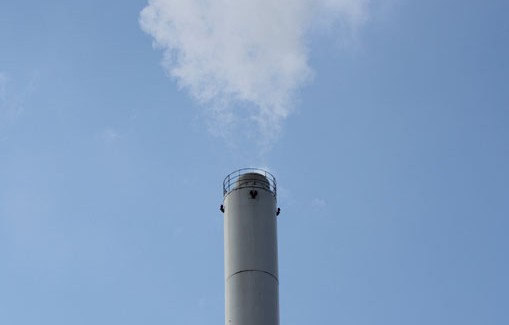




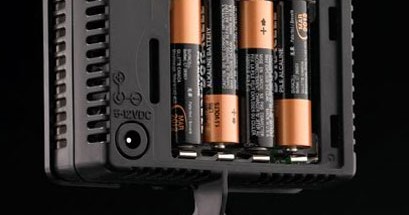
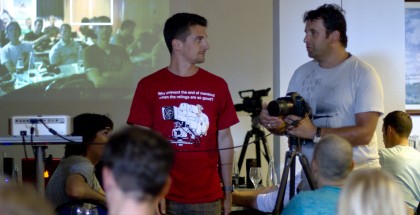
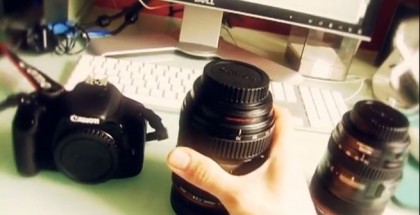
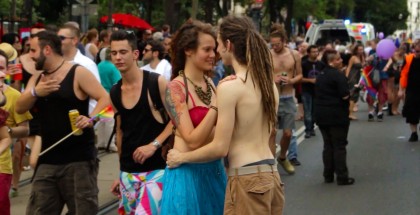
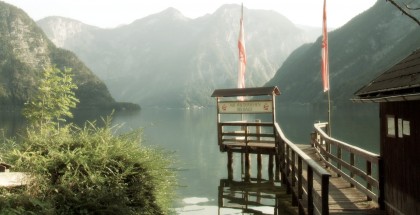
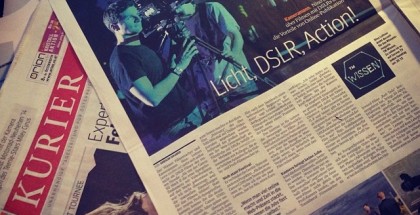
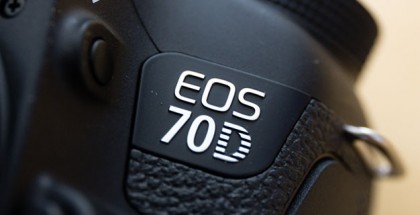













Comments